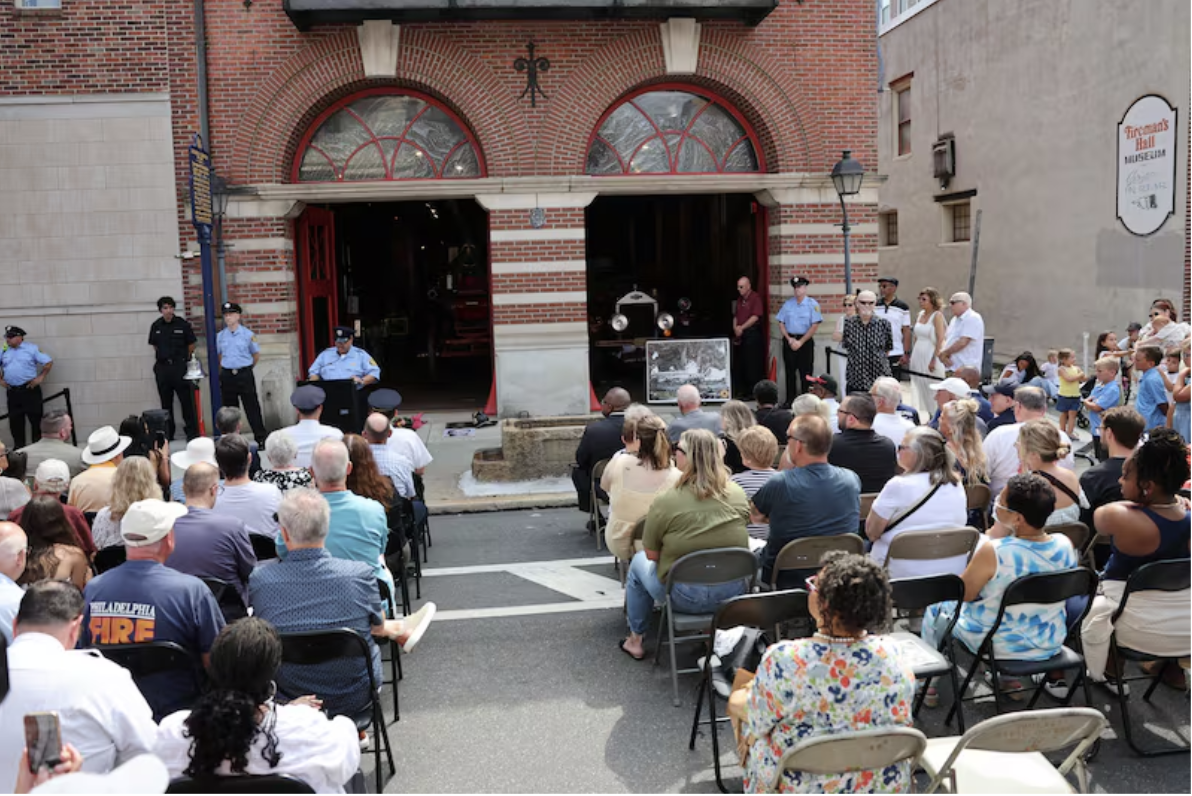Immigrant advocates encourage Norristown residents to ‘raise their voices’ amid increased ICE arrests.
Dozens of Norristown residents stood on the corner of West Marshall and George Streets on Saturday, enduring the rain in support of their immigrant neighbors.
Following weeks of intense ICE presence in the Montgomery County seat, organizer Denise Agurto, 47, asked all undocumented neighbors to go home for their safety.
“This is the time for your allies to be here supporting you,” Agurto, executive director of Unides Para Servir Norristown, told the crowd. “No matter where you are from, we are glad you are our neighbor.”
In the last two weeks, more than 20 people have been taken into custody by ICE in Norristown, Agurto said, including a 34-year-old man arrested hours before the rally.
“Today, they broke our heart because they took one of us,” Agurto said. “He is a good guy, a family person who goes from work to home, and is always willing to help the community. He didn’t even have a deportation order.”
Anxious about her immigration status, a bakery owner watched the rally from inside her establishment.
“Norristown used to be a place full of happiness, people used to walk freely,” said the 55-year-old who requested anonymity out of fear of reprisal. “Now Norristown is desolate, people are terrified, and the business is not doing well.”
The Mexican national has spent more than half her life living in the borough — where about a third of the people identify as “Hispanic or Latino, according to Census figures — and has never seen people experience this level of panic.
Confused, she struggles to make sense of the fleeing sense of safety. “Me and my business give back to this country,” she said. “I pay taxes; I am not a burden to the state; I came here with nothing and work day and night to provide for my children. It’s incredibly heartbreaking to see Trump destroying all sense of community for so many of us.”
The arrests in Norristown come as President Donald Trump added Montgomery County to a list of sanctuary jurisdictions, from which he has threatened to cut federal funding.
Several Norristown Municipal Council members have also spoken out against ICE actions and criticized the arrests as cruel and destructive.
ICE has not responded to requests for comment.
Pennsylvania Immigration Coalition and other advocacy groups have issued an “ICE Alert,” warning of the agency’s growing presence throughout the state.
The groups have advised undocumented people, “If you can stay home, please stay home. If you are not able to stay home, please limit your travel.” They also encouraged people to review their rights under the law.
Saying they had no power to act, the county commissioners turned down a request this week to adopt a “welcoming-county” policy that would limit cooperation with ICE.
Legally, no local policy or ordinance can prevent ICE from conducting federal immigration enforcement.
Sanctuary jurisdictions simply choose not to help ICE do its work. But Trump has urged uncooperative cities, counties, and states to enforce federal law.
After shaking up the top leadership of ICE for the second time since February, the agency recorded its highest number of arrests in a single day on Tuesday.
Lydia Villalba, 27, who teaches high-schoolers in the Norristown school district, has witnessed firsthand how the current political situation has taken a toll on the classroom.
“They don’t want to make summer plans because they are afraid to leave their house. They are afraid ICE will be raiding at the parks,” Villalba said. “This is not how they should be living, they are children forced to grow up faster when they should be focusing on sports and being with friends, not about their families being separated.“
While Lorna Cassano, 61, doesn’t personally know anyone who has been taken into custody by ICE, as a healthcare worker, she has a feeling that could soon change.
“What this administration is doing is reminiscent of the Nazi Germany,” Cassano said. “These are my neighbors, my coworkers, my patients, these are fellow human beings.”
Milton Hernandez, 75, can’t help but feel a sense of helplessness after seeing fellow Latinos being taken away.
Norristown has changed, he said. “Now all you see is heads peeking out of doors, neighbors asking each other if it’s safe to go outside,” Hernandez said.
As Agurto continued welcoming supporters to the rally, she urged them to use their voices to inspire other allies to lend a helping hand.
“The allies are the people who can help us stop this, who see how their neighbors are being treated,” Agurto said as cars beeped in support. “They can see the empty streets, the struggling businesses, so they need to raise their voice as citizens.”
– The Philadelphia Inquirer
(Michelle Myers and Jeff Gammage also contributed to this story)

























































